train robberies
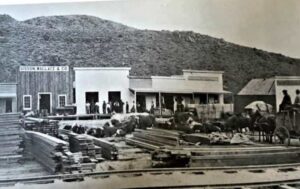
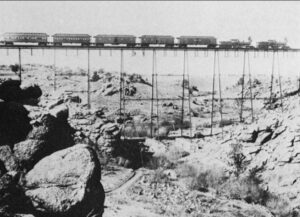 When the Transcontinental Railroad opened in 1869, the people in the east finally had the chance to take a trip into the Wild West without having to move there or plan on spending months there visiting family. I can imagine that there were mixed emotions involved as they headed out. The Western dime novels had told of wild Indians, gunslingers, bank robberies, and of course, train robberies. It was almost enough to make them question the sanity of their intended trip into the wild, but nevertheless, they went.
When the Transcontinental Railroad opened in 1869, the people in the east finally had the chance to take a trip into the Wild West without having to move there or plan on spending months there visiting family. I can imagine that there were mixed emotions involved as they headed out. The Western dime novels had told of wild Indians, gunslingers, bank robberies, and of course, train robberies. It was almost enough to make them question the sanity of their intended trip into the wild, but nevertheless, they went.
One of the great misconceptions of the Wild West is that it maybe wasn’t quite as wild as the Easterners had been told. In fact, the town of Palisade, Nevada, a state notoriously known for its wildness these days, like many other Wild West towns of the time, was actually very peaceful. In fact, the town had so few crimes that it didn’t even have an official sheriff. So, when the train began running through Palisade, and the train conductor 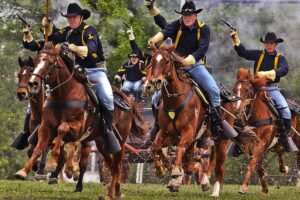 told the townspeople that railroad passengers were often disappointed at how these quiet towns were so different from how they were portrayed in the Western dime novels, he people of Palisade decided that something had to be done.
told the townspeople that railroad passengers were often disappointed at how these quiet towns were so different from how they were portrayed in the Western dime novels, he people of Palisade decided that something had to be done.
The townspeople, with the full knowledge and approval of the citizens of the town, the US Cavalry, and even a local Indian tribe, staged Western-style shootouts in the street, bank robberies, Indian battles, and whatever else they could think of. The whole purpose was to provide entertainment for the passing railroad travelers. After the train passed, life in the small town went back to its “dull, quiet, and peaceful” normal. I don’t know if the purpose was to bring in more tourists, to save face when it came to the Western dime novels, or maybe just to have a good laugh at the expense of the city-slickers. The reality is that many of the people back east, at that time, felt like their way of life was better than the “craziness” of the Wild West, and that to go have a look was a way of not only entertaining themselves, but also to prove that the West could not possibly be a peaceful place to live. Of course, while things could be violent and wild in the old West, it wasn’t always that 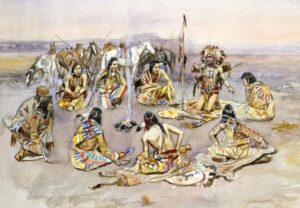
 way. It’s also a possibility that the people had moved to the West wanted the people in the East to think that the West was a wild place, full of adventure. It was the whole purpose for going west anyway, wasn’t it…to find that adventure? Yes, that was the purpose for the move to the West. And that purpose had to be protected, by any means necessary…even theater.
way. It’s also a possibility that the people had moved to the West wanted the people in the East to think that the West was a wild place, full of adventure. It was the whole purpose for going west anyway, wasn’t it…to find that adventure? Yes, that was the purpose for the move to the West. And that purpose had to be protected, by any means necessary…even theater.
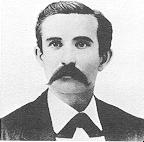 For many years I was essentially unaware of the Texas Rangers. Then, with the show Walker, Texas Ranger, this elite group of law enforcement officers became a household word. Of course, the Texas Rangers have been an institution in Texan since they were unofficially created by Stephen F. Austin in a call-to-arms written in 1823. They were first headed by Captain Morris. After a decade, on August 10, 1835, Daniel Parker introduced a resolution to the Permanent Council creating a body of rangers to protect the border, something we continue to need today.
For many years I was essentially unaware of the Texas Rangers. Then, with the show Walker, Texas Ranger, this elite group of law enforcement officers became a household word. Of course, the Texas Rangers have been an institution in Texan since they were unofficially created by Stephen F. Austin in a call-to-arms written in 1823. They were first headed by Captain Morris. After a decade, on August 10, 1835, Daniel Parker introduced a resolution to the Permanent Council creating a body of rangers to protect the border, something we continue to need today.
On May 2, 1874, John B. Jones began his adventurous career as a lawman, when he was appointed as a major in the Texas Rangers. Jones was born in Fairfield District, South Carolina, in 1834. He moved to Texas with his father when he was a small boy. He went to college at Mount Zion College in South Carolina, and after graduating he returned to his home in Texas to enlist in the Confederate Army during the Civil War. Talented and ambitious, he eventually rose to the rank of adjutant general. Jones took the defeat of the Confederacy hard, and after the war, he spent some time traveling in Mexico and Brazil trying to establish a colony for other disgruntled former Confederates. After determining that the colonial schemes held little promise for success, he returned to Texas where his military experience won him his major’s commission with the Texas Rangers.
Jones commanded the Frontier Battalion, a force of about 500 men stationed along the Texas frontier from the Red River to the Rio Grande. His mission was two-fold: to keep hostile-border Indians out of Texas and control the outlaws within Texas. His first Indian fight came less than six weeks later. While patrolling near Jacksboro, Texas, with 28 men, Jones spotted a band of more than 100 Indians that he thought were hostile Kiowa, Commanche, and Apache. Displaying more courage than wisdom, Jones directed his small band to attack the larger force of Indians. In the ensuing battle, two of the Rangers were killed and two wounded, but they were lucky to escape without more serious losses. Jones, feeling quite chastened, acted with greater care in his subsequent battles with Indians. Soon, his force became highly effective in repulsing invasions.
Four years later, Jones took on one of the most notorious outlaws on the Texas frontier…a man named Sam Bass. For some months, Bass and his gang had been staging train robberies in Texas. Although most of the robberies failed to net much money because Bass and his partners were incompetent amateurs. Nevertheless, the people of Texas demanded that Bass be stopped. The Texas government turned to Jones, ordering him to 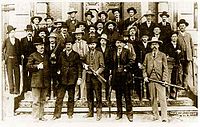 use his Rangers to run Bass down. Seizing on the drama of the chase, the press dubbed the affair the “Bass War.” For four months, Bass led Jones and his Rangers on a wild chase through Texas. In July 1878, Jones learned that Bass was planning to rob the bank in Round Rock, Texas. When Bass did hit the bank, Jones and his Rangers were waiting. Bass was badly wounded in the ensuing gun battle, and he died several days later. Oddly it was Bass who later became a legend, portrayed as good-natured Robin Hood, while Jones has largely been forgotten. Jones continued to command the Frontier Battalion until he died of natural causes in 1881 at the age of 46.
use his Rangers to run Bass down. Seizing on the drama of the chase, the press dubbed the affair the “Bass War.” For four months, Bass led Jones and his Rangers on a wild chase through Texas. In July 1878, Jones learned that Bass was planning to rob the bank in Round Rock, Texas. When Bass did hit the bank, Jones and his Rangers were waiting. Bass was badly wounded in the ensuing gun battle, and he died several days later. Oddly it was Bass who later became a legend, portrayed as good-natured Robin Hood, while Jones has largely been forgotten. Jones continued to command the Frontier Battalion until he died of natural causes in 1881 at the age of 46.

